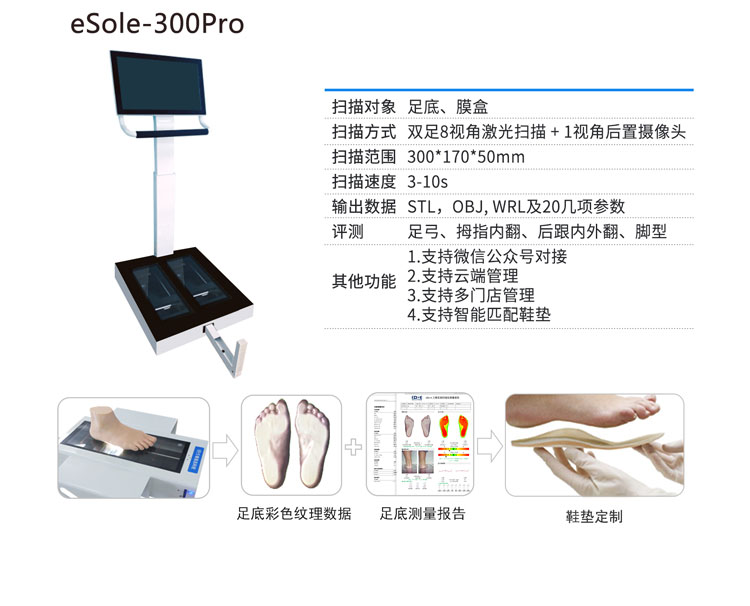There are various specific application scenarios for foot scanners in the footwear industry:
Personalized customization: Shoe factories can use foot scanners to obtain three-dimensional foot shape data of consumers, and then customize shoes for consumers based on this data.
In this way, each pair of shoes can perfectly fit the foot shape of consumers, improving wearing comfort and reducing wear.
Rapid manufacturing: With the help of foot scanners, factories can directly obtain consumer foot shape data on the production line, thereby enabling rapid manufacturing and greatly reducing production cycles.
Precision marketing: By analyzing foot data, companies can gain a deeper understanding of consumer needs and preferences, thereby formulating more precise marketing strategies. For example, recommending suitable shoe styles and features for consumers with different foot types.
Design and R&D: Designers can design and develop shoes based on the data provided by the foot scanner to better meet the needs of consumers.
Quality assessment: Foot scanners can be used to evaluate the quality and comfort of shoes, thereby helping to improve product design and manufacturing processes.
In summary, foot scanners have a wide range of application scenarios in the footwear industry, which can improve production efficiency, product quality, and consumer satisfaction. With the continuous advancement of technology, its application in the footwear industry will become increasingly widespread.

 0755-86131192
0755-86131192 2024-02-21
2024-02-21 返回列表
返回列表









 0755-86131192
0755-86131192